regls.m
From A First Course in Machine Learning, Chapter 1. Simon Rogers, 31/10/11 [simon.rogers@glasgow.ac.uk] An example of regularised least squares Data is generated from a linear model and then a fifth order polynomial is fitted. The objective (loss) function that is minimisied is

Contents
Generate the data
x = [0:0.2:1]'; y = 2*x-3;
Create targets by adding noise
noisevar = 3; t = y + sqrt(noisevar)*randn(size(x));
Plot the data
plot(x,t,'b.','markersize',25);
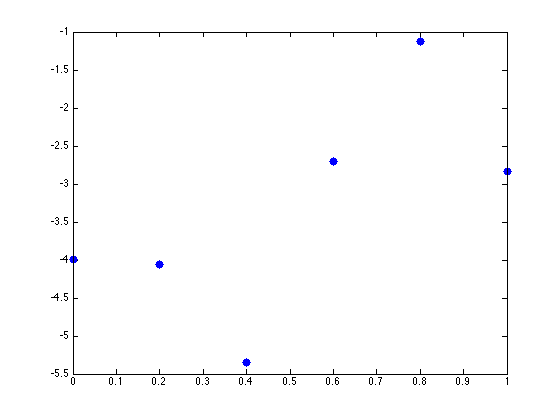
Build up the data so that it has up to fifth order terms
plotX = [0:0.01:1]'; X = []; plotX = []; for k = 0:5 X = [X x.^k]; plotX =[plotX plotx.^k]; end
Fit the model with different values of the regularization parameter

lam = [0 1e-6 1e-2 1e-1];
for l = 1:length(lam)
lambda = lam(l);
N = size(x,1);
w = inv(X'*X + N*lambda*eye(size(X,2)))*X'*t;
figure(1);hold off
plot(x,t,'b.','markersize',20);
hold on
plot(testX,TestX*w,'r','linewidth',2)
xlim([-0.1 1.1])
xlabel('$x$','interpreter','latex','fontsize',15);
ylabel('$f(x)$','interpreter','latex','fontsize',15);
ti = sprintf('$\\lambda = %g$',lambda);
title(ti,'interpreter','latex','fontsize',20)
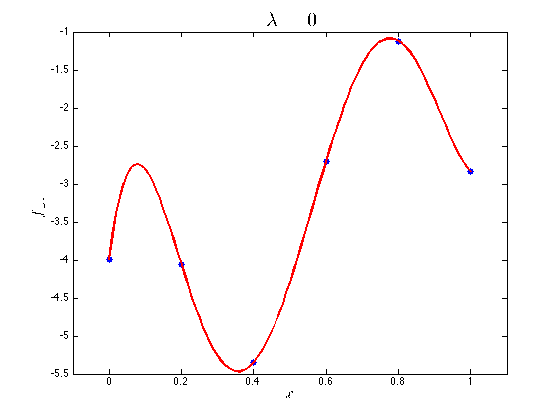
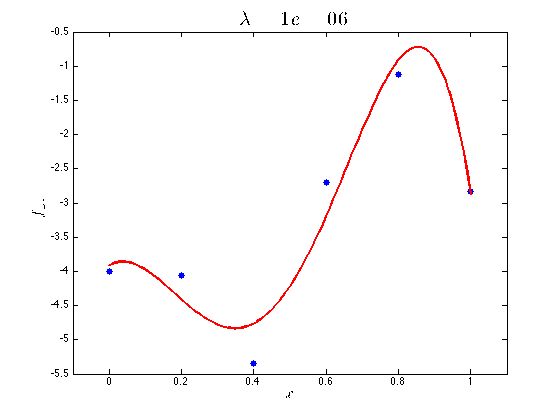
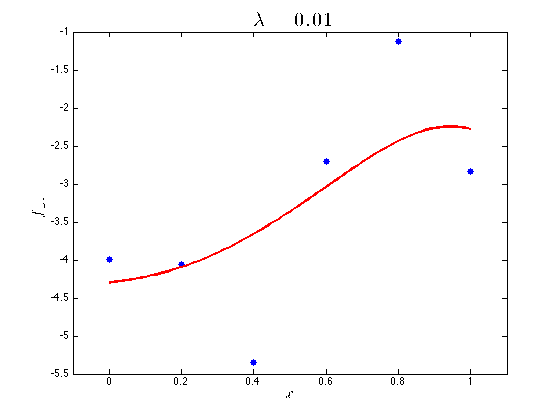
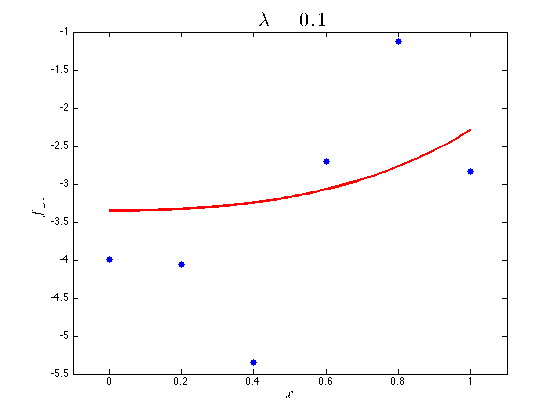
end